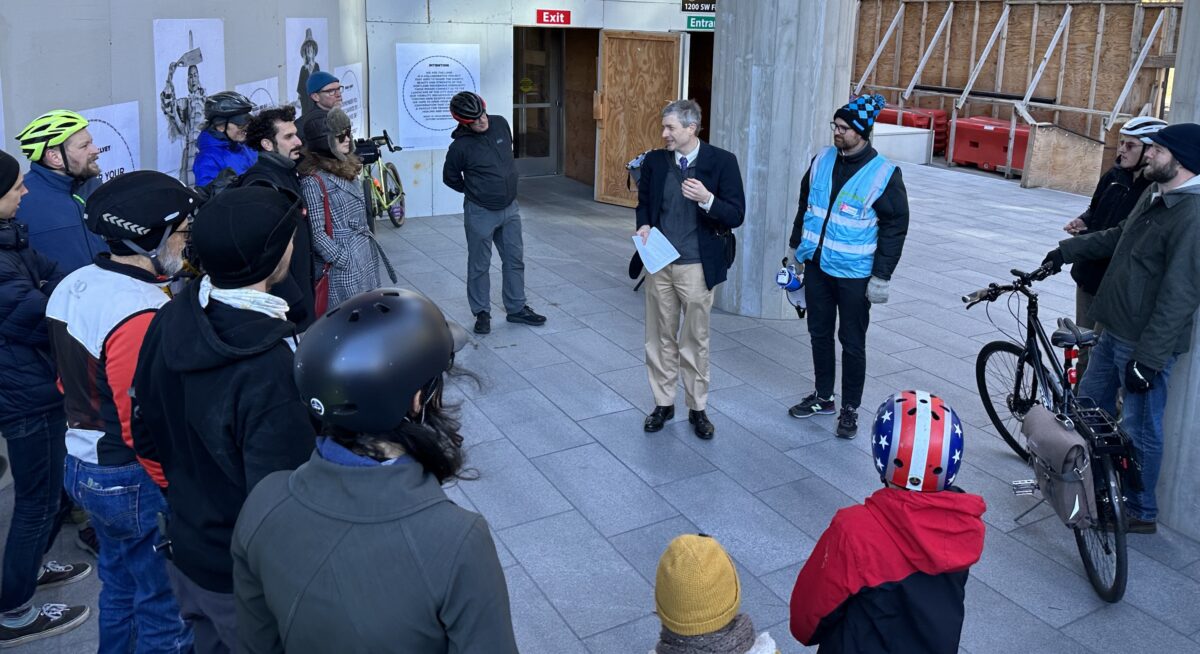
We just received a copy of the official complaint that was filed moments ago at the Multnomah County Court by lawyers working for BikeLoud PDX in their lawsuit against the City of Portland.
Before we get to the details of the lawsuit, there’s been a big development in the case already: The law firm of Thomas, Coon, Newton & Frost have signed on as co-counsel. This is very notable because TCN & F is well-known in transportation circles statewide and their case history goes far beyond bike law. In 1999, the firm won an $80.3 million settlement (a record at the time) from Big Tobacco. The firm also literally wrote the book on bike law in Oregon and has played a major role in bike and traffic safety legislation for decades.
Now lead counsel Scott Kocher of Forum Law Group has James Coon, Cynthia Newton, and Chris Thomas from TCN & F on his team. Beyond the helping hands, they add significant legitimacy to the lawsuit. (Disclaimer: Both TCN & F and Forum Law Group are financial supporters of BikePortland.)
In the 8-page complaint signed by these four lawyers and filed at the courthouse today, they allege that the City of Portland, “Has not only failed to implement its Council-approved Plans to provide safe places for people to bicycle, walk and use mobility devices on and around Portland streets, the City of Portland has failed to meet its most basic legal obligations to provide safe streets.” Among those obligations is the 1971 Oregon Bicycle and Pedestrian Bill (ORS 366.514). The complaint says Portland has “systematically failed to comply” with that law and they have, “failed to adopt any policies or procedures to implement its obligations.”
The suit goes on to say BikeLoud PDX and its 250 members suffer because of the lack of safe cycling facilities.
There are 22 specific road project locations listed in the complaint as examples of where the Bike Bill was not followed. They include (taken directly from complaint):
- The “Hoyt Yards” area of the Pearl District in NW Portland, which comprises at least 24 complete city blocks, and was constructed entirely without bicycle facilities;
- NW 13th Avenue;
- NW Kearney and NW Johnson from 9th to Station Way;
- NW 23rd Ave south of Lovejoy St and the NW Vaughn St intersection;
- NW Savier St east of NW Aspen Ave;
- NW Thurman St NW 29th Ave to NW 32nd Ave (including bridge);
- NE Killingsworth from Commercial to MLK;
- NE MLK at Columbia (intersection);
- NE Lombard from St Louis to Richmond;
- NE Everett Ct from NE 97th Ave to NE 99th Ave
- NE 33rd Avenue over NE Lombard St which was constructed and/or reconstructed without bicycle facilities, and in part without pedestrian facilities;
- NE Thompson E of 149th;
- NE San Rafael from 148th to 162nd;
- NE 46th Ave north of Columbia;
- NE Couch and Davis East of 97th Ave and 97th Ave;
- NE 136th between Whitaker Way and Prescott Ct;
- NE and SE 82nd Ave;
- Overpasses over I-205 at SE Market; NE Glisan; NE Prescott, NE Sandy;
- SE Hawthorne Blvd;
- SE Division St from SE 10th to SE Cesar Chaves;
- SE 118th Ave from Pardee to Raymond; and
- SW 11th from Gibbs to Gaines.
And those are just a sampling of the locations. The complaint says there are “numerous” others.
The lawsuit does not seek any financial compensation (beyond legal fees), but it does ask for four specific things:
- a statement from the City that they have not fully complied with the Bike Bill at the stated (and unstated) locations;
- an injunction from the court to comply with the Bike Bill at those locations (and any others that meet the legal requirement for action);
- in locations where the City can prove they don’t have to comply with the Bike Bill, they must build the bike facilities as outlined in the Portland Bureau of Transportation Bicycle Plan for 2030;
- a halt to any current or future projects subject to the Bike Bill unless and until the City can prove they are in compliance with the law.
Take a look at the complaint in the PDF below, and stay tuned for more coverage:


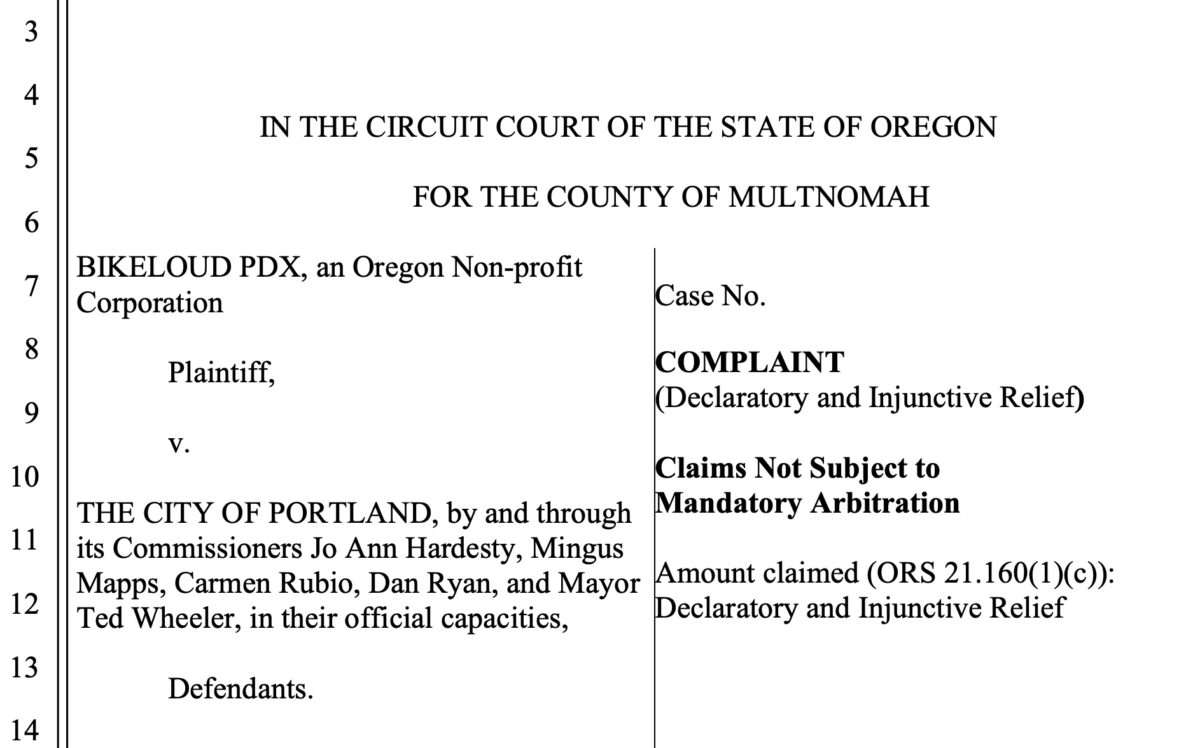
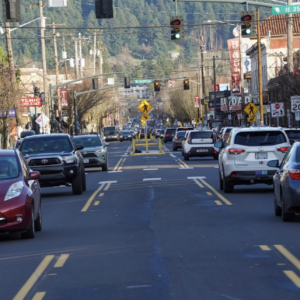

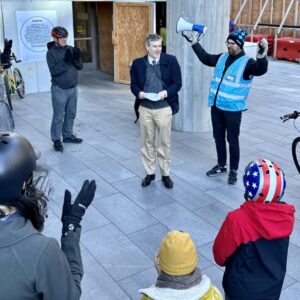
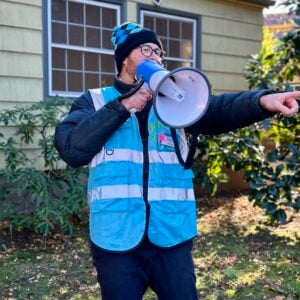
Thanks for reading.
BikePortland has served this community with independent community journalism since 2005. We rely on subscriptions from readers like you to survive. Your financial support is vital in keeping this valuable resource alive and well.
Please subscribe today to strengthen and expand our work.
This is great news and getting more interesting and real.
Now having said this…I wonder if the city’s legal representatives will just pull a page out of the Trump ‘Mar-a-Lago playbook’ and wave their magic policy wand (with a council bill adoption too) to state that all of these street facilities are now “bikeways”…either legally allowing cyclists to bike on the sidewalks in these commercial corridors OR through reduction in posted speeds/ stencilling saying these are functionally shared streets in some form.
Stay tuned to this Bike Channel…
Bike are already allowed to ride on sidewalks, except for core downtown.
Your statement indicates a complete lack of knowledge of existing transportation system plans.
https://www.portland-tsp.com/#/streets
Many of these are narrow streets with multiple curb extensions that were present before the reconstruction projects, and the reconstruction projects did not widen the street at all. Is it BikeLoud’s position that the Bike Bill requires removal of pedestrian infrastructure like curb extensions or transit platforms to add bike lanes? Is it BikeLoud’s position that a road should be widened to add bike lanes in a way that would remove all the trees and the furnishing zone along a street? What if it’s a really narrow 22 foot wide street, does the Bike Bill require prohibiting all motor vehicle traffic? Does the Bike Bill require removal of on-street parking and freight loading zones to add bike lanes? It seems like the legislative intent was that when roads are widened, then bike facilities are required, but I struggle with how it could apply when no widening is involved. To boil it down, does this law require taking something away from one mode and giving it to another?
Since sharrows are a legal type of bike facility, and state law allows them to be added to any travel lanes, my guess is that the most impact this lawsuit will possibly have is to force PBOT to add sharrows to all these streets. Not a great outcome in my opinion.
Also, just to nitpick, some of these were resurfacing projects, and not reconstruction projects, including Hawthorne. And 82nd Ave was obviously not a PBOT facility until recently, so it’s odd to list that in the lawsuit.
They are suing the City of Portland, not necessarily PBOT. The list includes a large variety of roadway types, funders, contractors, pavement types, and programmatic elements, not just the usual PBOT street repaves. The 118th Ave project for example was a joint Parks & BES LID half-pave of a gravel street that PBOT was the contractor – remember it well. The common element in all of these, 82nd included, is that at least some city money went into each project. One question I hope gets resolved, at least partly if not fully, is that to what extent city funding requires the city to comply with the Oregon Bike Bill as well as the city’s complete streets policies?
In the first article BikePortland wrote about this law suit, they stated that if bike facilities are not feasible for a certain project, a viable alternative must be provided. I’m sure the city could provide viable alternatives for roads that aren’t wide enough for bike facilities, if it’s found that the bike bill was violated when they were reconstructed. They certainly don’t always provide reasonable alternatives!
What makes you think that the legislative intent was for the bill to be kicked in only when roads are widened? I don’t see anything indicating that in the bill itself.
While the bill doesn’t talk about widening, it seems pretty obvious that ODOT would not be compelled to, for example, remove a travel lane from a four-lane highway to put in bike lanes when they reconstruct it without widening. What if the highway carries 40,000 vehicles per day and doesn’t meet the criteria for a road diet? I don’t think the bike bill would require them to reallocate space. The bike bill is about adding facilities, not reallocating the existing space.
Wow, just wow! The City promised sharrows on SE Hawthorne way back in the late 1990s and then didn’t follow through on that, all that cyclists got were the very small and obscure ‘narrow lanes – bikes in lane’ signs, which were largely ignored by motorists.
Plus, no one is currently asking PBOT to widen the streets for bike infrastructure, as I understand it the request on the table is to reduce the amount of ROW allocated to motor vehicles and reassign that space to cyclists and pedestrians.
Finally, if you really want to dig back into history, SE Hawthorne was originally a two-lane street with a streetcar running in both directions and 9′ sidewalks. When they shut the streetcar down they also cut the sidewalks back to expand the roadway for private motor vehicles. This was less than a century ago and the current status quo won’t last forever either.
Sharrows on busy streets invite cyclists and are contraindicated by the traffic volumes.
They would be unsafe.
The so-called bike bill gives pedestrian infrastructure equal footing but you would never know that from this lawsuit.
Based on the definition of “bicycle trail” in Section 5 of 366.514 it would appear that a nearby bike lane or greenway would allow for exemption via Section 2 of 366.514.
For example, NW 13th is listed and there are bike lanes on NW 14th NB and NW 16th SB. NE and SW 82nd is listed, there is a greenway on NE 70s and 86th and SE 70s and 80s.
It will be interesting to see how the opaque wording of “other available ways” is interpreted by a 2022 judge vs. how anyone has looked at it over the last 40+ years.
Something to keep in mind is legislative intent. This law was originally written for ODOT, with state highways in mind. So the idea was that Highway 101, when it is widened through a small town, should either have sidewalks and bike lanes added, or a nearby parallel multi-use path. The problem is that it is now interpreted to apply to all city streets, in a completely different context. So it will require a new legal interpretation, which may be forced by this lawsuit, assuming it doesn’t get dismissed outright which is certainly possible.
Most of the streets on this list have parallel streets, since we are in a city with a good grid system. And whether or not those parallel streets have sharrows, it might be hard to make an argument that bikes are not accommodated. Plus, there is nothing stopping bicyclists from riding on these streets by taking the lane. The definition of “bicycle trail” as you note is very expansive. It might apply to any street where bikes are legally allowed to ride.
The green way routes that parallel 82nd are in no way direct or equivalent to a bike lane on 82nd. They don’t provide access to commercial destinations on 82nd, they jog all over the place, and in many locations, they are well over half a mile away. No way can those routes be construed to be providing an adequate alternate to a bike lane on 82nd.
Okay, but they are certainly “other available ways” and when one government official is deciding standing of a suit against the government, you better have quite the case and this doesn’t seem like a case at all.
82nd Avenue is not yet a city-controlled right of way. The city can’t make changes until it has control, ergo, the city cannot be held responsible for what ODOT failed to do.
NW 13th?
GMAFB
NW 13th should be a car-free pedestrian area, not reconstructed into some sort of glorified bike highway.
(Hoyt Yards and the few overpasses/bridges seem like better cases but there is a whole lot of cringe on this list.)
I agree, it’s a little tone-deaf to cite a street that is becoming more and more of a pedestrian-only street and say it should become a bikeway. This whole lawsuit seems to ignore pedestrians. Many of their example streets would require removal of curb extensions and bus platforms to add bike lanes.
“Many of their example streets would require removal of curb extensions and bus platforms to add bike lanes.”
Damn straight! The curb extensions were a mistake from the very beginning and the bus platforms with the bike lanes going through them are just stupid and an accident waiting to happen. Parking-protected bike lanes are also BS, it just makes it harder for the motorists to see cyclists in the bike lane and gives motorists much wider turning radii for right turns, the combination of which is a recipe for another future disaster.
“This whole lawsuit seems to ignore pedestrians.”
The article states that the suit alleges that the City of Portland, “Has not only failed to implement its Council-approved Plans to provide safe places for people to bicycle, WALK and USE MOBILITY DEVICES on and around Portland streets, the City of Portland has failed to meet its most basic legal obligations to provide safe streets.” Among those obligations is the 1971 Oregon Bicycle and PEDESTRIAN Bill (ORS 366.514)”.
It looks like the suit specifically addresses pedestrians. It doesn’t ignore them.
But what about all their examples? On many of those streets it would be impossible to provide bike lanes without removing pedestrian infrastructure.
I agree in that I wouldn’t want the result of this to be tearing out pedestrian infrastructure to put in bike infrastructure. But I’m guessing (since I don’t know the regulations) that it wouldn’t be likely that the regulations would require that. They might require that compromises needed to add bike infrastructure would come from vehicle lanes, not sidewalks. Or there might be exceptions to needing to provide bike infrastructure if the only way to provide it was harming pedestrian infrastructure. Or they might prohibit changing the vehicle areas if bike travel can’t be accommodated without harming pedestrian travel.
I’m also guessing BikeLoud isn’t going to want to be pitting people walking against people biking, especially given its statement that includes walking along with biking as a harmed activity.
I’d love to hear more from the BikeLoud lawyers about this.
This is a vague statute so it’s not inconceivable that a judgment could require this.
Perhaps it would have been better to not guess and develop a more focused list. Unfortunately, this list includes de facto pedestrian zones (NW 13th) and roadways with extensive pedestrian infrastructure that would have to be removed to include bike facilities (Division between 10th and Chavez).
Including SE Division on this list explicitly pits people cycling against people walking.
If the law is written well, it wouldn’t pit cycling against walking. But maybe you’re right that it’s vague, and in that case it could, and this suit would make it clear the law needs reworking. And of course that possibly could bring in people who’d try to weaken it rather than correct it. And in the meantime I wouldn’t want transportation agencies to see they now had an excuse to whittle away pedestrian infrastructure (“We didn’t want to cut that sidewalk in half, but the bike law required it.”).
So again I‘d love to hear more about from the lawyers about all this.
Amen to NE 33rd Avenue over NE Lombard St w
That bridge actually has a sidewalk and bike lanes so I don’t understand why it’s listed.
Bottom line – great news! One more thing to be thankful for going into Thanksgiving.
There are already bike lanes on the Market St. overpass. The intersection with 96th could probably use a signal but bike lanes are plenty wide.
I’ve been checking some of these examples, and several of them do have sidewalks and bike lanes so it’s weird that they’re listed.
Maybe I missed it somewhere, but what took so long to file this lawsuit? Why didn’t it happen years/decades ago?
Because no one did it. These things take a dedicated advocacy group or person willing to step up.
So, the stellar team included at least five sections of ODOT infrastructure in it’s lawsuit against the City?
(Four I-205 overcrossings, and 82nd Avenue- only recently approved to be transferred)
At least they’ll get free publicity.
I just checked the status of this suit. It looks like it was schedule last week for a 4-week trial to begin on April 7 of next year. I hope you keep on top of this and maybe even attend a trial date or two for those of us chained to a 9-to-5 desk, Jonathan!
Hi Michael. I am very close to this and am aware of all the developments thanks to the main lawyer for BikeLoud. I was just talking with him about it a few days ago. Trust me, if something notable happens, you will read about it here